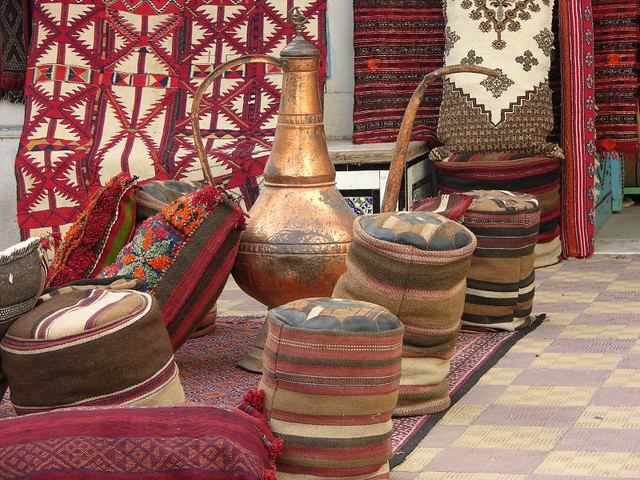In an unprecedented tribute to the art of golden textiles across the centuries and civilisations, Tunisia shines with its cannetille embroidery and golden thread costumes at the Musée du quai Branly-Jacques Chirac, in Paris, as part of the temporary exhibition ‘Au fil de l’Or.’
‘The Art of Dressing from North Africa to the Far East’ (February 11-July 6, 2025), which invites visitors to explore the history and traces of this precious metal, which has fascinated mankind for thousands of years, in osmosis with the textile arts.
The fruit of ancestral know-how, this subtle marriage between precious fibres and gold strips has been fashioned by generations of weavers across five major cultural regions: North Africa, the Middle East, the Arabian Peninsula, South and South-East Asia, and East Asia.
Tunisia is in the limelight in the ‘Costumes of Light from the Lands of the Setting Sun’ exhibition, where a collection of richly embroidered traditional costumes illustrates the refinement of its sartorial heritage.
The introductory text, written by Leila Temime Blili, Emeritus Professor of Modern and Contemporary History at the University of Manouba, features in the exhibition’s prestigious catalogue, a work of over 300 pages presenting the contributions of thirty-four specialists who reveal the wealth of costumes from a vast region stretching from North Africa to Japan.
From the shores of the Mediterranean to the farthest reaches of the Pacific, the exhibition invites visitors to follow in the footsteps of these societies, in which goldsmiths and weavers combine their talents to produce both prestigious textile works and historical testimonies to traditions that are sometimes very old. …a reminder that this heritage of clothing is constantly being reinvigorated and continues to inspire creativity’ reads the editorial by President of the Musée du quai Branly Emmanuel Kasarhérou.
From North Africa to Japan
‘A fabulous journey through time and space, discovering the mysterious and fascinating origins of gold and its marriage with the textile arts. The world’s most precious and noble metal, an object of envy, a symbol of wealth and splendour, a sign of elegance and refinement… Discovered nearly 7,000 years ago, gold has never ceased to fascinate mankind. The ultimate material for all kinds of expertise, experimentation and tradition, it has been used since antiquity to make jewellery, ornaments and weapons. As early as the fifth millennium B.C., it was used to embellish the first luxury fabrics for men of power. Over the centuries that followed, skilled weavers and craftsmen Roman, Byzantine, Chinese, Persian and then Muslim used the most ingenious techniques to create veritable fabrics of art where silk or linen fibres were intertwined with gold threads and strips,’ according to the Musée de quai Branly-Jacques Chirac’s website.
The exhibition pays tribute to this universal tradition, featuring pieces from three Maghreb countries – Tunisia, Algeria and Morocco – alongside kimonos from the Edo period and silks from the Near East and Asia. It illustrates a shared history where artistic creation, heritage and innovation come together.
Djebbas, qoftans, farmlas… Tunisian golden threads reveal their lexicon
In the section dedicated to costumes from North Africa, Tunisia stands out for its sumptuously embroidered ceremonial outfits. Qoftans, djebbas, tunics, trousers and waistcoats display a virtuosity of craftsmanship influenced by the Andalusian heritage and Ottoman expansion. Some of the pieces on display date back to the late 19th and early 20th centuries. The Tunis ‘kiswa tarayoun’ (bridal costume), made from velvet, silk, golden silver thread, sequins and cannetilles, embodies this timeless elegance.
Alongside it are other emblematic pieces: a ‘qmejja qsira’ from Sousse, a ‘koufia’ from Moknine, a ‘kmejja’ from Sfax, a ‘farmla’ ceremonial waistcoat from Raf-Raf, a ‘kadrûn’ dress from Hammamet, a ‘shushâna’ bridal tunic from Raf-Raf and many others, all bearing witness to the continuing vitality of this precious tradition. These garments, embroidered in gold or vermeil, illustrate the richness of Tunisian women’s costume, whose origins date back to Carthaginian and Roman antiquity.
Leila Temime Bellili: A thousand-year-old history of golden textiles in Tunisia
In this journey through materials, time and geography, Leila Temime Blili, a specialist in social history and family history, retraces the history of traditional embroidery in the various towns and cities of Tunisia in the exhibition catalogue. She shows how this craft has developed, nourished by the cultural exchanges made possible by Tunisia’s central position at the heart of the Mediterranean.
The fabrics, although simple in cut, are adorned with rich ornamentation. The men weave the silk and wool stamens, which are prepared by the women, who then embroider them. As rich as they are varied, the pieces embroidered with gold thread show the know-how that has been passed down, making clothing a sign of social distinction and a secure financial asset that women can sell in times of need.
In default of ancient iconography, researchers have found descriptions of pieces such as the qmejja or the djebba in marriage contracts, where four seasonal outfits are required. In the 19th century, the caftan gradually disappeared, except in certain regions, and was replaced by the djebba, the cut of which is reminiscent of ancient garments.
After the First World War, a new garment appeared: the tarayoun, consisting of wide trousers and a short blouse, inspired by the uniform of the African riflemen.
These costumes, considered to be part of our intangible heritage, are the subject of sustained interest and research by young model-makers.
Across the ages and across civilisations, gold-thread embroidery continues to amaze, with these fragments of shattered sunlight, showcased in this exhibition organised by the musée du quai Branly-Jacques Chirac, with the collaboration of one of the first Chinese haute couture designers, Guo Pei, whose sumptuous contemporary creations, inspired by the Himalayas and their imagination, reveal a timeless fascination for the most coveted of metals: Gold… a material that, according to recent scientific research, is of stellar origin, and from which Man has drawn the thread of marvels, weaving, between his fingers, the brilliance of the sky into the weave of fabrics.
Provided by SyndiGate Media Inc. (
Syndigate.info
).







